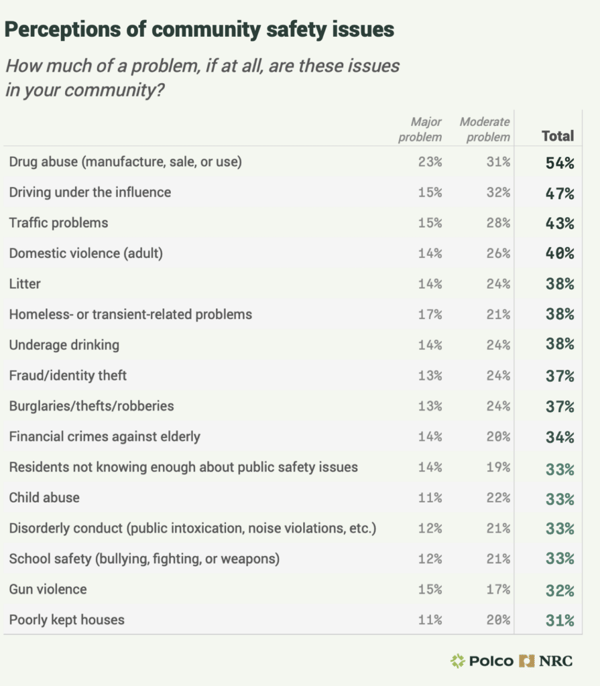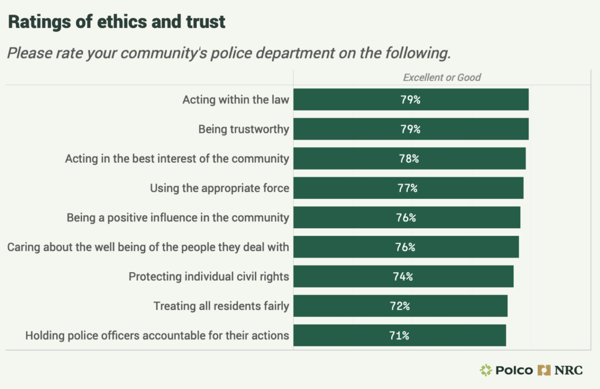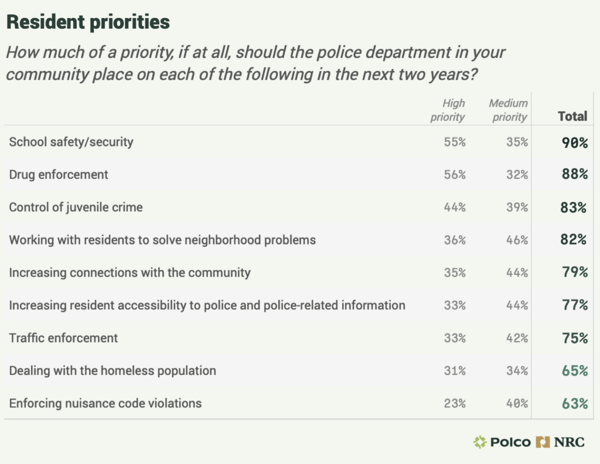Four Crucial Priorities Public Safety Leaders Should Consider
By NRC on May 28, 2020
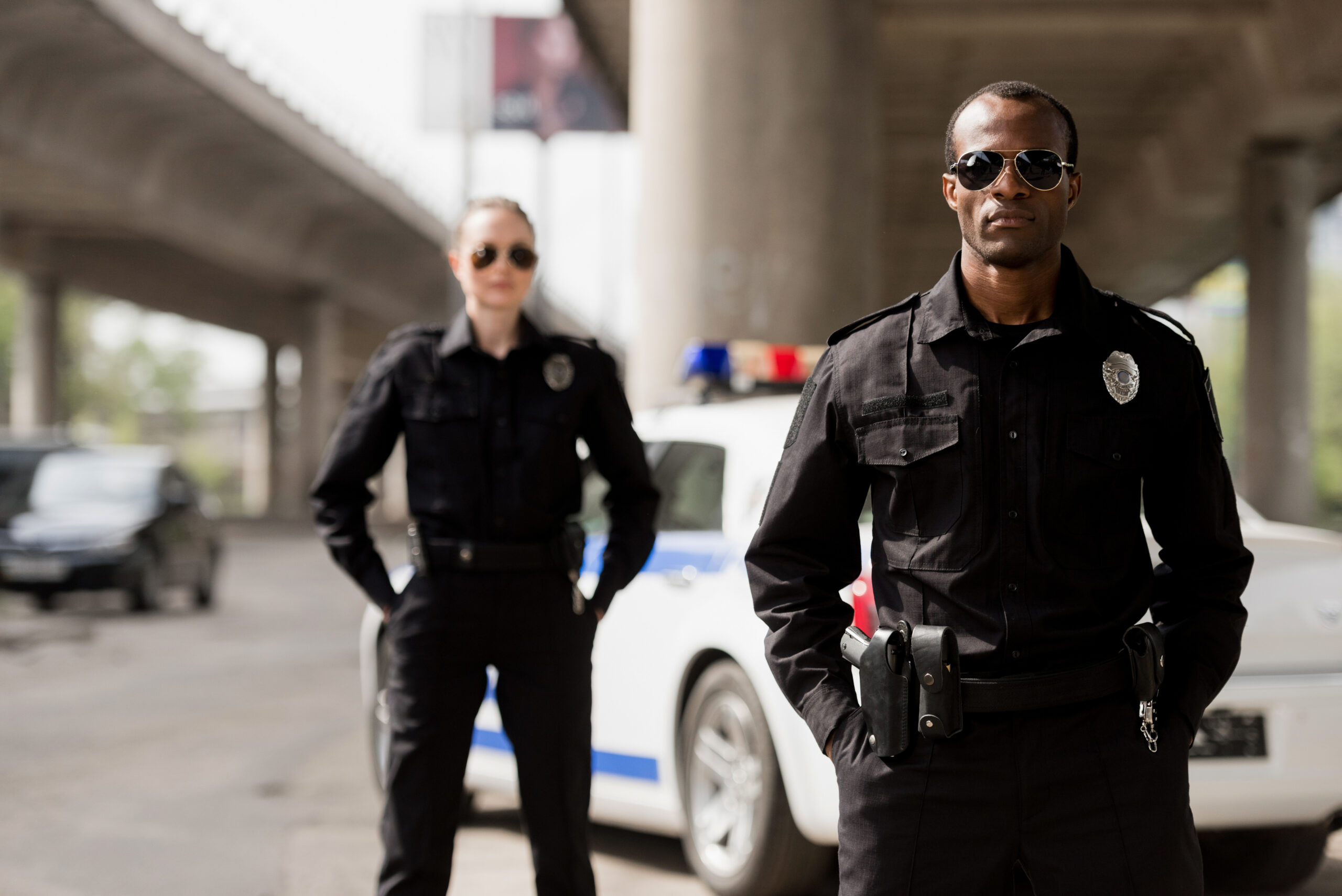
— Article by Brian Smith, Graphics by Parker Quinn —
Public safety is widely-recognized as a chief priority for communities. However, police officers and residents remain divided on a number of law enforcement issues, according to Pew Research Center.
“What’s clear is that more than ever police services and residents want and need to form a closer alliance,” said Michelle Kobayashi, Polco/National Research Center (NRC) Sr. VP of Innovation. “That partnership should be born from a mutual understanding of community priorities for public safety.”
So what issues should be at the forefront of consideration for public safety officials? How should law enforcement leaders evaluate their services to make sure their priorities and actions match the community’s desires and needs?
Analyzing The National Police Services Survey
According to Polco/National Research Center (NRC) research, the most important performance measures law enforcement leaders should consider are:
- How the public perceives safety in the community
- The quality of local police services
- Interactions between police and residents
- Residents’ highest public safety priorities
The National Police Services Survey (The NPSS) was developed by NRC / Polco research experts and law-enforcement thought-leaders. The survey provides a statistically-valid report of resident perceptions on safety and community policing. It also puts individual survey results into meaningful context with nation-wide benchmark comparisons.
“The NPSS is the gold standard for public safety benchmarking surveys,” Kobayashi said. “It not only informs decision-makers about appropriate ways to increase safety and align resident and government priorities, but it also strengthens relationships between communities and public safety officers.”
Perceptions of Safety
Local law enforcement greatly contributes to how a community perceives its own level of safety and even the desirability of a place to live. NRC's research shows that over 80 percent of residents feel safe in their city or town.
While the majority of people feel safe in their general community, different locations around cities and towns differ. Residents feel safest during the day in their neighborhoods and downtown or commercial areas. Recreational areas at night rate lowest for feelings of safety.
While most people feel safe, every community has some concerns regarding public safety. According to research, most residents consider drug abuse and driving under the influence the preeminent problems in their community. Residents also say they are highly concerned about traffic, domestic violence, homelessness, litter and burglaries.
(Click to expand image)
Despite massive media attention, residents surprisingly rated mass shootings as among the least-concerning public safety issues in their own community. Also ranking low were political protests, prostitution, abandoned cars and neighbor disputes.
Quality of Police Services
Despite disagreeing on some issues, more than three-fourths of residents rate the service they receive from law enforcement in their community as excellent or good.
Most residents also trust their law enforcement agencies. Three-fourths of residents positively rate issues such as acting in the best interest of the community, acting within the law, being a positive influence in the community and using appropriate force.
(Click to expand image)
Residents have a variety of opinions when it comes to police services and how highly they rate them. Community members approve highly of police work in assisting victims of crime, maintaining public order, responding to emergencies quickly, working to increase school safety and investigating crimes. Rating less favorably are enforcing codes, drug enforcement, communicating clearly with the community, and dealing with homeless persons.
Interactions with Residents
The nature and frequency of interactions between the public and officers heavily shape residents’ opinions about the quality of law enforcement.
About half of residents will have contact with police services within a year. In general, these interactions rate overwhelmingly positively with residents when considering things such as officer fairness, responsiveness to requests, treating people in a respectful manner, overall impressions and more.
The most common types of contact people will have with police include casual encounters in the community, calling for help, reporting a crime, and reporting an emergency. The least frequent are being arrested, being a victim of a crime, or being considered a suspect.
Priorities Across the Nation
Law enforcement, concerned with day-to-day operations, may wonder about what bigger picture priorities residents want them to focus on.
Residents overwhelmingly say school safety (90%) and drug enforcement (88%) should be their city’s top safety priorities for the upcoming two years. Next in priority are controlling juvenile crime and working with residents to solve neighborhood problems.
(Click to expand image)
“What all this data from The NPSS shows us is that residents need to feel safe in their communities to thrive,” Kobayashi said. “In general, people say they trust their law enforcement, but ultimately they want to be heard when it comes to priorities for their individual and community safety.
“The NPSS can help bring what law enforcement does well into alignment with the community’s priorities.”
More information on The NPSS can be found here.
Related Articles
Popular posts
Sign-up for Updates
You May Also Like
These Related Stories
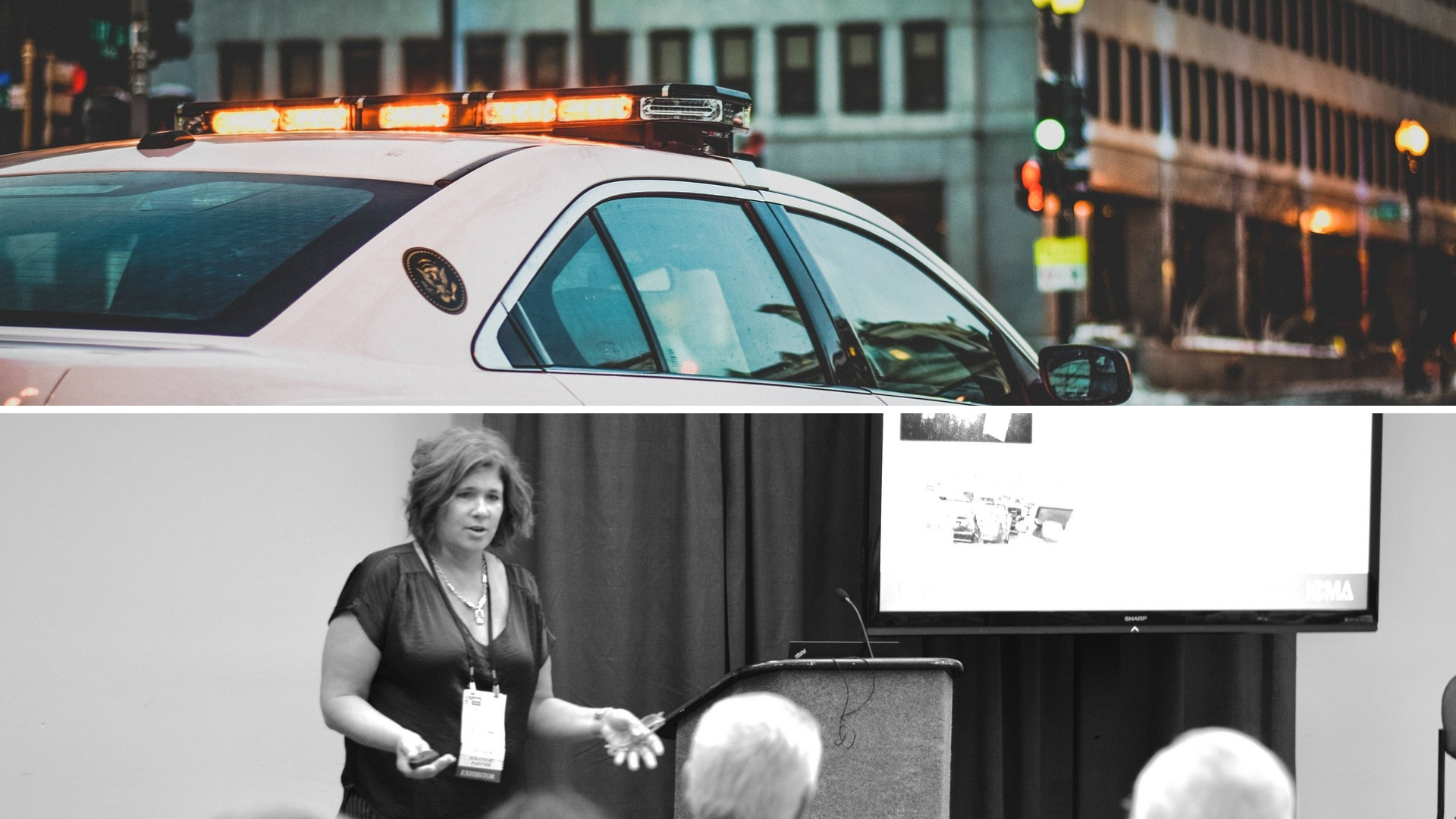
Examining Public Opinion on Today's Safety Priorities

New Police Study Shows Significant Changes in American Opinions on Public Safety Services


